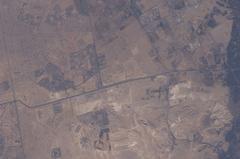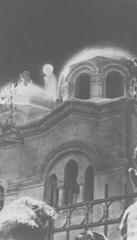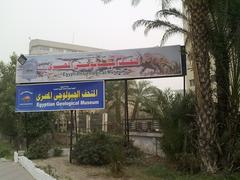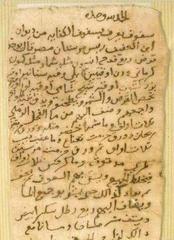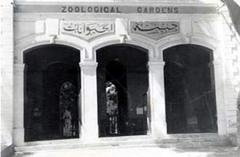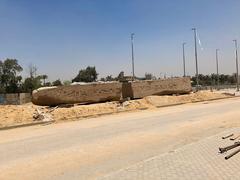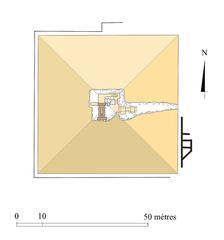Hadīqat Al-Andalus: Visiting Hours, Tickets, and Your Guide to Cairo’s Andalusian Oasis
Date: 14/06/2025
Introduction: The Allure of Ḥadīqat Al-Andalus
Ḥadīqat Al-Andalus (Al Andalus Garden), situated on Gezira Island in Cairo’s Zamalek district, is a rare fusion of Andalusian-Moorish aesthetics and Egyptian heritage. Established in the early 20th century, this peaceful haven draws inspiration from the gardens of medieval Al-Andalus, encapsulating centuries of cross-cultural achievement and artistry. Its design—marked by Moorish arches, intricate tilework, elegant fountains, and lush Mediterranean plantings—evokes the legendary palatial gardens of Córdoba and Granada, offering a tranquil retreat amidst the city’s bustle.
More than just a garden, Ḥadīqat Al-Andalus is a symbol of convivencia—the spirit of coexistence and exchange among Muslims, Christians, and Jews that defined Al-Andalus. The site hosts cultural events, art exhibitions, and musical performances, making it a vibrant hub for both locals and visitors to explore the enduring connections between Andalusian and Egyptian culture. (TheTravel, Atlas Obscura, The Friday Times, wanderlog.com)
Quick Facts
- Location: Gezira Island, Zamalek, Cairo, Giza Governorate, Egypt
- Opening Hours: 7:00 AM – 11:30 PM (hours may vary for Ramadan and special holidays)
- Entry Fee: Free
- Accessibility: Wheelchair- and stroller-friendly with paved walkways, though some steps exist
- Suitable For: History lovers, families, architecture enthusiasts, photographers, and those seeking tranquility
The Legacy of Al-Andalus: From Iberia to Egypt
A Brief Historical Context
Al-Andalus refers to the Muslim-ruled regions of the Iberian Peninsula (711–1492 CE), renowned for their architectural wonders, scientific advancements, and vibrant multicultural society. The artistic and intellectual legacy of this period—exemplified by sites like the Alhambra and the Great Mosque of Córdoba—continues to inspire across the Mediterranean.
The Egyptian Connection
The creation of Ḥadīqat Al-Andalus in the early 20th century by Zulfugar Pasha was an explicit homage to this golden age. The garden’s design, completed in 1929, brings the motifs and atmosphere of Al-Andalus to the Nile, reflecting Egypt’s own cosmopolitan history and its links to the broader Islamic world. (TheTravel; Atlas Obscura)
Garden Design: Moorish Inspiration in Cairo
Layout and Architectural Highlights
- Arched Royal Hall: The garden’s centerpiece boasts horseshoe arches and elaborate tilework reminiscent of the Alhambra and Córdoba, providing a gathering place for cultural events.
- Mosaic Benches and Pathways: Zellij-style tiles in geometric and arabesque patterns line benches and steps, echoing Moorish traditions.
- Fountains and Water Channels: Multiple fountains and acequia-inspired channels cool the air and enhance tranquility, true to Islamic garden principles.
- Palm Groves and Mediterranean Plantings: Rows of palms and flowering shrubs evoke the lush landscapes of Andalusia.
- Statue of Ahmed Shawky: Honoring Egypt’s “Prince of Poets,” this statue underscores the garden’s literary and cultural significance.
- Ancient Egyptian Replicas: These sculptures, set among Andalusian motifs, symbolize Egypt’s layered cultural identity. (TheTravel, Atlas Obscura)
Spatial Organization
The garden is divided into three main areas:
- Winding Passages and Palm Groves: Shaded, meandering paths lined with palms for contemplative walks.
- Andalusian Motif Section: Tilework, fountains, and the Shawky statue create a vibrant central zone.
- Riverside Terraces: Panoramic terraces overlooking the Nile, with seating and views of the city skyline.
Visitor Experience: Facilities, Access, and Tips
Getting There
- By Metro: Nearest station is Opera; from there, a short walk or taxi ride.
- By Taxi/Car: Easily reachable from central Cairo; parking available nearby.
- By Public Bus: Several routes connect downtown Cairo to Zamalek.
Facilities
- Paved walkways and shaded seating
- Decorative fountains and mosaic benches
- Open lawns for relaxation and picnics
- Restrooms (bring hand sanitizer and tissues)
- Limited food vendors; cafés and restaurants in Zamalek district
- Riverside café with views of the Nile
Accessibility
The garden is mostly accessible to wheelchairs and strollers, though some areas have steps. It’s suitable for all ages.
Best Times to Visit
- October–April: Mild weather (20°C–28°C / 68°F–82°F) ideal for walks and photography
- Early mornings and late afternoons: Pleasant temperatures and beautiful light
Tips for Visitors
- Dress modestly and comfortably
- Photography is welcome; commercial shoots require permission
- Bring water, sunscreen, and a hat in summer
- Visit during weekdays or early/late hours to avoid crowds
- Check community boards or the garden’s social media for event schedules
Cultural Activities and Events
Regular Programs
- Art Exhibitions and Performances: The garden hosts cultural events, music concerts, and art workshops, especially from October to April.
- Interpretive Panels: Bilingual displays explain the history and significance of Al-Andalus and its influence on Egypt.
- Children’s Play Areas: Open lawns and shaded spaces make it family-friendly.
Nearby Attractions
Combine your visit with a trip to the Cairo Opera House, Cairo Tower, Egyptian Museum, or Giza Plateau for a full cultural experience. (wanderlog.com)
Comparative Guide: Ḥadīqat Al-Andalus vs. Al-Azhar Park
| Feature | Ḥadīqat Al-Andalus | Al-Azhar Park |
|---|---|---|
| Location | Zamalek, Gezira Island | El Darb El Ahmar |
| Entry Fee | Free | EGP 30–35 (adults), 20–25 (child) |
| Opening Hours | 7:00 AM – 11:30 PM | 9:00 AM – 10:00 PM |
| Size | Small, intimate | Large, 30+ hectares |
| Design | Andalusian/Moorish | Modern Islamic landscape |
| Facilities | Benches, fountains, lawns | Restaurants, playgrounds, events |
| Accessibility | Central, public transport | Car/taxi, parking |
| Best For | Relaxation, history, photos | Family outings, events, dining |
Sustainability and Preservation
As a historic site, the garden requires ongoing maintenance and community stewardship. Visitors are encouraged to respect the grounds, avoid littering, and support conservation efforts. (academia.edu)
Frequently Asked Questions (FAQ)
Q: What are the opening hours of Ḥadīqat Al-Andalus?
A: Daily, 7:00 AM–11:30 PM (may vary during holidays).
Q: Is there an entrance fee?
A: No, entry is free.
Q: Are guided tours available?
A: Formal tours are rare; check in advance or inquire with local operators.
Q: Is the garden wheelchair accessible?
A: Mostly, with some steps in certain areas.
Q: Can I take professional photographs?
A: Personal photography is welcome; commercial shoots require permission.
Q: Are there food and drink facilities?
A: Limited vendors inside; plenty of options in Zamalek nearby.
Visual and Virtual Resources
- Photo Galleries & Virtual Tours: Available via official tourism sites and social media channels for pre-visit planning.
- Images with Descriptive Alt Text: For accessibility, images such as “Ḥadīqat Al-Andalus visiting hours” and “Andalusian garden fountains in Cairo” illustrate the garden’s highlights.
Visitor Recommendations and Final Thoughts
Ḥadīqat Al-Andalus stands as a testament to Egypt’s cosmopolitan heritage and the enduring influence of Andalusian art and architecture. Its unique combination of history, culture, and natural beauty makes it a must-visit for anyone exploring Cairo or Giza. The garden’s free access, extended hours, and peaceful atmosphere offer a rare sanctuary in the heart of the city, while its role as a venue for cultural activities fosters ongoing engagement with Egypt’s past and present.
Plan your visit during cooler months, bring a camera, and consider exploring nearby landmarks for a full cultural experience. For guided tours and event updates, download the Audiala app or follow the garden’s social media channels.

